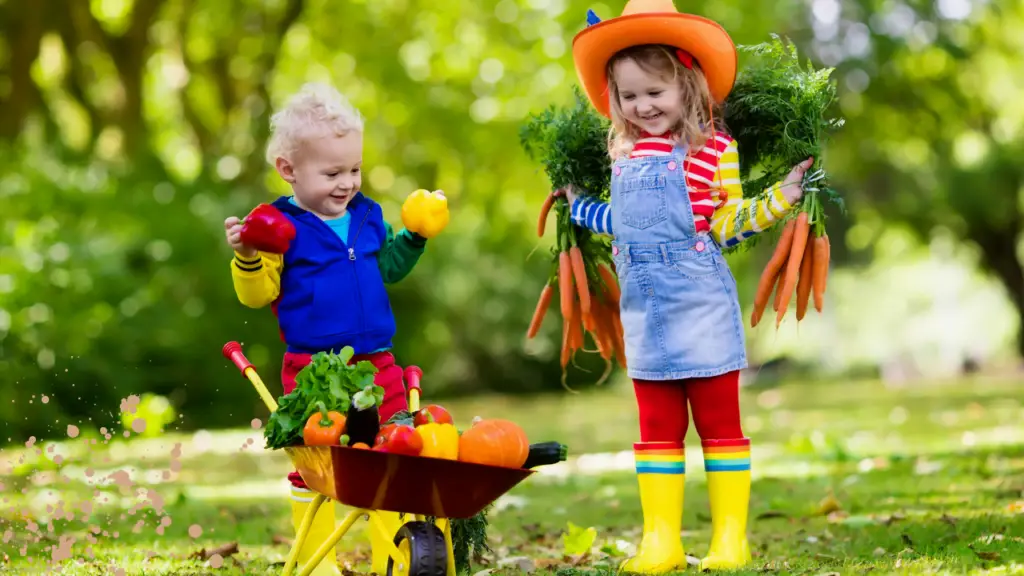
Discover those fun gardening ideas for sibling!
Ever thought of gardening as a thrilling adventure?
Toss aside those images of solitary, quiet afternoons with plants.
Imagine, instead, a dynamic duo – you and your sibling – embarking on a green journey, filled with challenges, creativity, and countless memories.
From crafting DIY forts to unraveling the mystery of unidentified seeds, there’s a world of sibling fun waiting just beyond your back door.
Intrigued?
Buckle up, and let’s explore how tending to plants can also mean nurturing lifelong bonds.
Ready to dive into this captivating garden tale?
Some of the links in this post are affiliate links. This means if you click on the link and purchase the item, I will receive an affiliate commision at no extra cost to you. All opinions remain my own. Read more on our Privacy Policy Page

1. Sibling Plant Race
gardening ideas for sibling
The idea of a Sibling Plant Race is not just a game; it’s an inventive approach to infuse some light-hearted competition and learning into the process of gardening together. Let’s explore this idea in more depth.
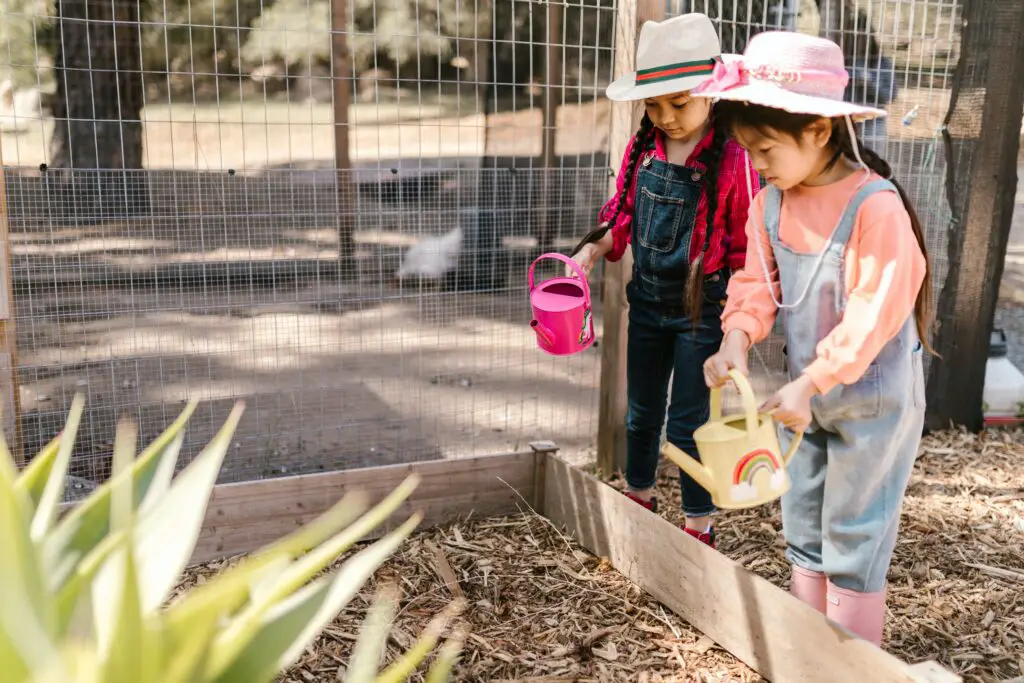
Setting the Stage
To initiate the Sibling Plant Race, the groundwork is crucial. Ensure both siblings have equal resources. This includes:
- Identical pots or equally sized garden plots.
- Same soil composition for both.
- Equal access to sunlight and water.
Providing a level playing field is essential to ensure fairness and pure reliance on gardening skills.
Choosing the Plant
While any plant can make the race interesting, it’s wise to choose a plant that shows visible growth over a short period. Some suggestions are:
- Sunflowers: They grow relatively quickly and it’s exciting to see who’s sunflower reaches for the sky first!
- Radishes or lettuce: They mature rapidly, and it’s a treat to witness whose produces the first edible vegetable.
- Marigold or petunia: If flowers are the choice, these bloom faster than most, making the race thrilling.
Learning in the Process
The race is not just about winning; it’s about the journey. Throughout the growth process, siblings will:
- Research: To ensure their plant grows the fastest, they might dive into understanding the plant’s needs better, leading to a valuable learning experience.
- Problem Solve: If a plant isn’t growing as expected, they’ll need to figure out why and how to remedy it. This might mean adjusting sunlight, figuring out optimal watering, or even combating pests.
- Celebrate Milestones: Every small achievement, like the first leaf, the first bud, or the first fruit, becomes a milestone to celebrate.
The Bonding Element
While the race adds an element of fun, the actual reward is the bonding that occurs. Some key bonding elements include:
- Shared Anticipation: Waiting for the first signs of growth, watching the first sprouts emerge, and comparing plant heights can be exciting moments they anticipate together.
- Knowledge Exchange: One sibling might stumble upon a useful tip or trick and decide to share it, fostering a spirit of teamwork even in competition.
- Mutual Respect: Each sibling learns to respect the other’s efforts and dedication, even if their plant doesn’t grow the tallest or bloom the fastest.

Concluding the Race
At the end of the set period, there’s a clear “winner” in terms of plant growth. However, the real victory lies in the time spent together, the laughs shared, and the lessons learned. It might even become an annual tradition, with siblings eagerly waiting for the next Sibling Plant Race.
The Sibling Plant Race is more than a mere competition; it’s a journey through the intricacies of nature, combined with the joy of shared experiences. Through the highs and lows of the race, what truly flourishes is the bond between siblings, making it a cherished memory in the garden of their relations
2. Theme Gardens
gardening ideas for sibling
Let siblings tap into their creativity with themed gardens. They can brainstorm and decide on a theme they both love – maybe it’s a pizza garden with tomatoes, basil, and peppers, or a butterfly garden with flowers that attract these beautiful insects. Working together on a shared vision is a surefire way to strengthen their bond.
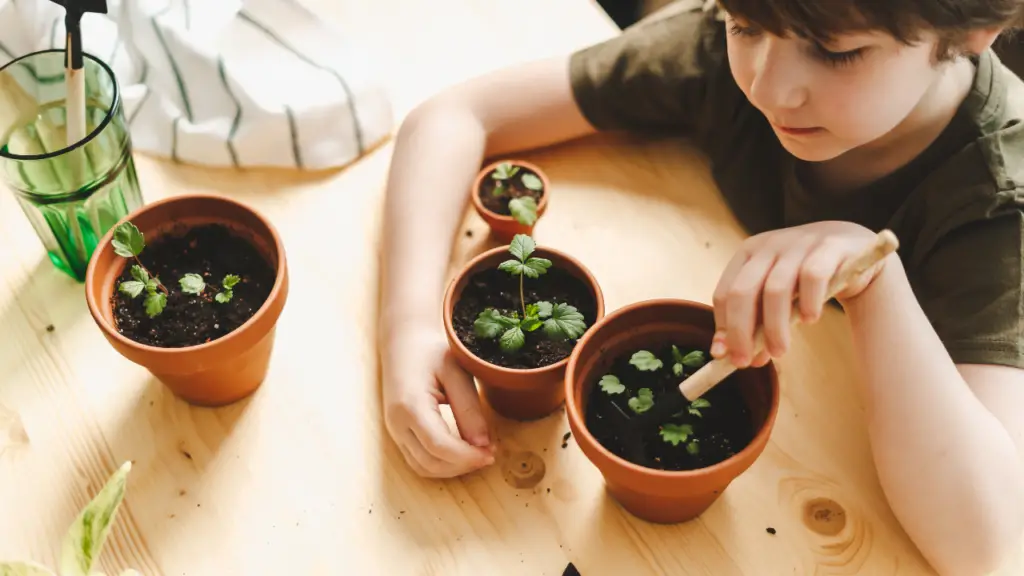
Theme Gardens are where imagination meets soil, where abstract ideas blossom into tangible green realities. For siblings, these gardens can serve as a brilliant canvas to portray shared interests, dreams, and passions. Here’s a deeper exploration into the concept.
Kids Organic Garden Kit – Kids Vegetable

The Essence of Theme Gardens
At its core, a theme garden revolves around a central idea or motif. Whether it’s a shared memory, a mutual interest, or a combined aspiration, the garden becomes an embodiment of that theme. Every plant, decoration, or layout choice reflects the chosen theme, turning the garden into a living storybook.
Steps to Creating a Theme Garden
- Brainstorm Together: Siblings should sit down and discuss their shared interests. This could be anything from favorite colors, hobbies, vacations, or even dream destinations.
- Research Plants and Elements: Once they have a theme, it’s time to find plants and elements that align. For a beach-themed garden, for example, they might consider sandy soil, sea-holly, or ornamental grasses.
- Plan the Layout: Here’s where creativity shines! Sketch out where each plant will go, where paths might run, and where any additional decorative elements might sit.
- Get Planting: With a plan in hand, the siblings can dive into the hands-on task of planting. This collaborative process is where many memories are made.
- Add Decorative Elements: Whether it’s a fairy statue for an enchanted garden or seashells for a marine theme, these final touches bring the theme to life.
Popular Theme Ideas
- Memory Lane Garden: This theme was touched upon earlier. Essentially, siblings can plant reminders of shared memories, be it flowers reminiscent of a holiday spot or herbs from a favorite shared meal.
- Literary Garden: For book-loving siblings, imagine a garden inspired by their favorite book or series. A ‘Hobbit’ garden, for instance, with a little hobbit hole and plants mentioned in Tolkien’s world.
- Wildlife Attractor: If both siblings love wildlife, they can design a garden that attracts specific creatures. Butterfly gardens, hummingbird gardens, or even squirrel-friendly gardens can be delightful.
- Around the World: For siblings with wanderlust, they can choose plants from different parts of the world they’d like to visit or have visited.
The Bond-Strengthening Power of Theme Gardens
While the end result is undoubtedly a feast for the eyes, the journey to create a theme garden is invaluable for sibling bonds.
- Shared Vision: Working towards a common goal strengthens teamwork and mutual understanding.
- Problem-Solving Together: Every garden faces challenges. Battling pests, figuring out sunlight needs, or replacing a plant that didn’t thrive can be joint projects.
- Celebrating Together: Each bloom or grown plant becomes a mutual achievement, a testament to their combined efforts.

Theme Gardens are not just about the plants or the aesthetics. For siblings, they represent shared journeys, collective memories, and a canvas where both can paint their dreams. Every time they step into their theme garden, they’re reminded of their bond, making the garden a sacred space of kinship and shared growth.
3. Memory Lane Garden
gardening ideas for sibling
Memory Lane Gardens are more than just patches of green or floral arrangements; they’re living, breathing storybooks. These gardens hold the power to transport siblings back to cherished memories, revisiting moments of laughter, joy, adventure, and even shared challenges. Let’s explore the deep-seated magic of these gardens and how they act as a bridge between past memories and present moments.
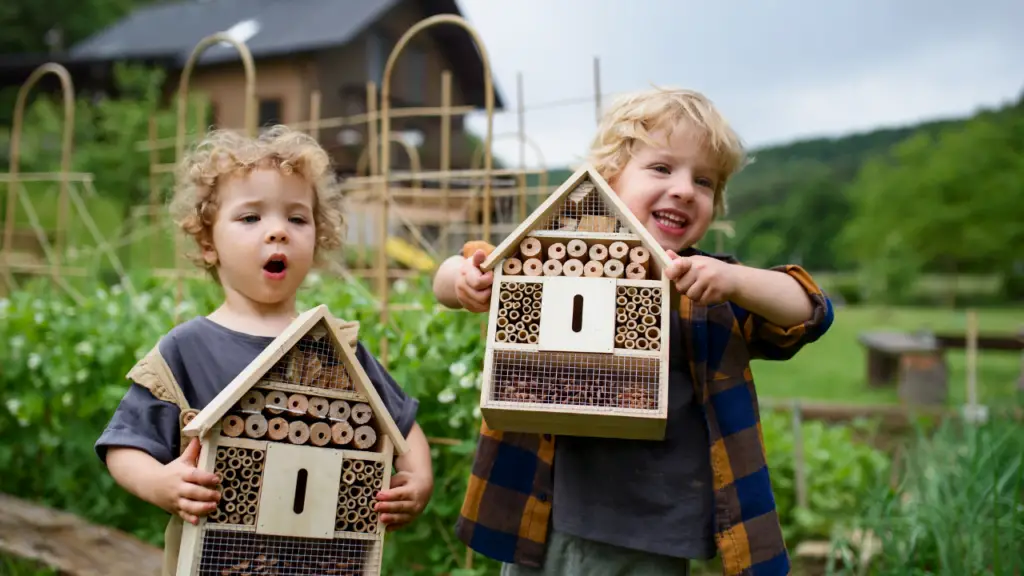
9 Wooden Birdhouses & 9 Wind Chimes -Art & Crafts for Kids Ages 4 5 6 7 8

The Concept Behind Memory Lane Gardens
The philosophy of a Memory Lane Garden is to capture moments in time through plants and garden elements. Just like how a song or scent can instantly take you back to a specific time or place, plants in these gardens serve as anchors to past memories shared between siblings.
Crafting Your Own Memory Lane Garden
- Dive into Memories: The process starts with siblings revisiting their shared past. It might be trips they’ve taken, festivals they’ve celebrated, or simple moments like a rainy afternoon spent reading together.
- Select Meaningful Plants: Every memory might have an associated plant, flower, or tree. Maybe a rose bush reminiscent of a grandparent’s garden or lavender that evokes memories of a trip to the countryside.
- Incorporate Accessories: Apart from plants, garden accessories can also stir memories. A certain type of birdhouse, wind chime, or even a particular shade of garden bench can evoke powerful recollections.
- Document the Stories: Create a garden journal or even small signposts next to each plant or element detailing the memory associated with it. This not only strengthens the memory but allows others to share in the experience.
Benefits for Sibling Bonds
- Shared Recollection: The act of creating the garden is a beautiful journey down memory lane. Each discussion, selection, and planting session becomes a trip into the past, reliving memories and reinforcing bonds.
- Therapeutic Moments: Some memories might be of challenging times. Planting in honor of these times can be a way for siblings to process, heal, and grow together.
- A Living Legacy: Over time, this garden becomes a testament to the siblings’ shared history. It evolves, yet the roots of their memories remain firm.
Evolving the Garden
The beauty of a Memory Lane Garden is that it’s never truly ‘complete’. As life goes on, siblings will share more experiences and create new memories. These can continuously find representation in the garden, making it a dynamic space that grows with time and experience.
A Memory Lane Garden is a heartfelt tribute to the journey siblings share. It’s not just about gardening; it’s about encapsulating moments, celebrating shared histories, and carving out a space where memories live on, vivid and vibrant. Every step in the garden becomes a step back in time, making each visit a heartwarming journey of reminiscence and deep connection.
4. Sibling Garden Journal
gardening ideas for sibling
A Sibling Garden Journal is not merely a record of what was planted and when. For brothers and sisters who bond over the soil, it is a chronicle of shared experiences, memories, and mutual growth. This tactile, ever-evolving document breathes life into the garden’s journey and serves as a testament to the bond shared between siblings.

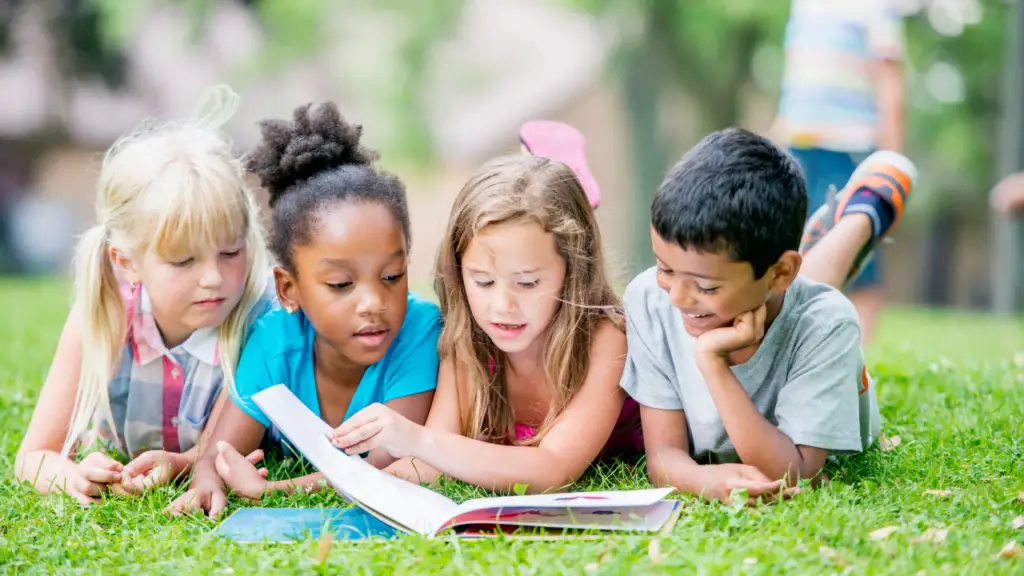
Understanding the Heart of a Sibling Garden Journal
At its core, a Sibling Garden Journal is a collaborative diary that captures the essence of their shared gardening endeavors. From the first seedling they plant together to the anticipation of waiting for the first bloom, the journal tells a tale of partnership, patience, and shared passion.
How to Start and Maintain a Sibling Garden Journal
- Selecting the Journal: This is the first and perhaps the most exciting step. Opt for a sturdy, weather-resistant notebook. Some prefer blank pages for sketches, while others lean towards lined pages for meticulous notes.
- Divide the Sections: Organize the journal into sections such as planning, planting, maintenance, and harvest. This allows for easy referencing in the future.
- Documenting the Journey: It’s crucial to note down specifics. This includes the date of planting, the type of seeds or plants, care instructions, and even anticipated harvest or bloom times.
- Personal Touches: Make it more than just a logbook. Incorporate pictures, sketches, pressed flowers, or even soil samples. Include personal anecdotes, such as how a certain plant reminded one sibling of a childhood memory or the challenges they faced while planting.
- Regular Updates: Like the garden itself, the journal thrives with regular attention. Schedule joint journaling sessions, perhaps once a week, to discuss and document the garden’s progress.
- Review and Reflect: At the end of each season or year, set aside time to reflect on the garden’s journey, noting successes, lessons learned, and goals for the next season.
Benefits of a Sibling Garden Journal
- Strengthened Bond: Working on the journal not only fosters a deeper connection with the garden but also between the siblings themselves. It’s a shared project that requires communication, cooperation, and mutual respect.
- Shared Learning: By keeping a detailed account, siblings can learn from their past gardening experiences, understanding what worked and what didn’t. This iterative learning can improve their gardening skills over time.
- A Legacy in the Making: Over the years, the journal evolves into a cherished heirloom, capturing decades of shared experiences, challenges, victories, and memories.
Expanding the Journal Concept
As the journal grows, it can take on new dimensions. Perhaps it could include:
- Recipes: Incorporating recipes made using the garden’s produce.
- Wildlife Chronicles: Documenting the various critters and birds that visit the garden.
- Photographic Journey: Creating a section dedicated to photos, tracking the garden’s visual transformation over the seasons and years.
The Sibling Garden Journal transcends being a mere record-keeping tool. It emerges as a symbol of unity, love, and shared purpose. Through its pages, it narrates tales of determination, joy, challenges, and mutual growth. It’s a timeless testament to the enduring bond between siblings, nurtured and strengthened through the simple yet profound act of gardening together.
5. Twinning Plants
gardening ideas for sibling
Kids Organic Garden Kit – Kids Vegetable

The concept of “twinning” is often associated with wearing matching outfits or sharing similar tastes. But when transferred to the realm of gardening, especially for siblings, twinning takes on a delightful twist. Twinning Plants offers siblings an opportunity to nurture identical plants but witness potentially diverse outcomes based on care, environment, and personal touches. Let’s dive into this fascinating gardening approach.
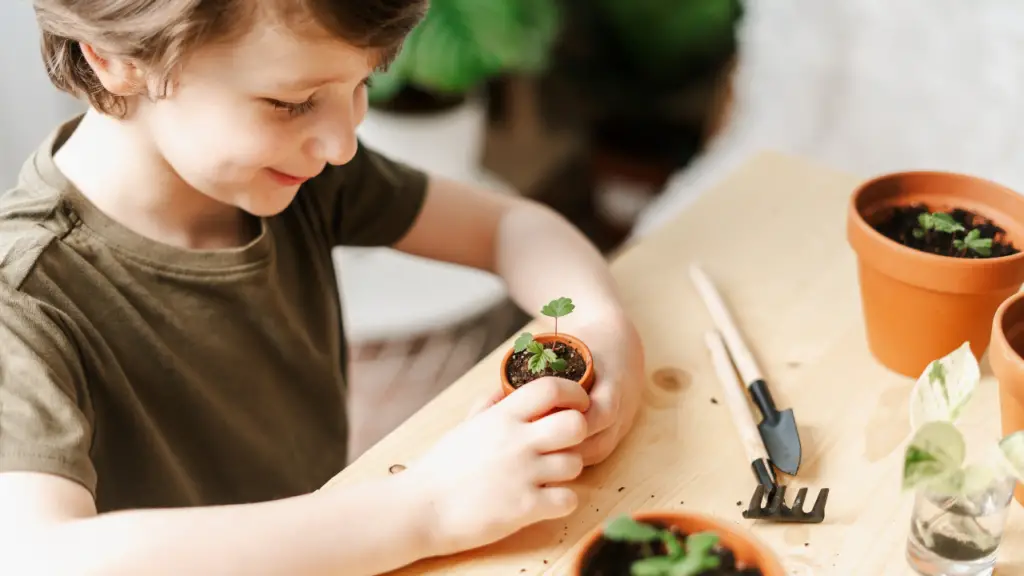
What is Twinning Plants?
Simply put, twinning plants involves siblings each starting with the exact same plant species under presumably similar conditions. It might be seeds from the same packet or saplings from the same nursery batch. The idea is to start with identical plants and then observe how they grow, potentially diverging, based on each sibling’s care and environment.
Why Choose Twinning Plants?
- Shared Starting Point: Beginning with the same plant ensures a shared experience and journey, giving siblings a common topic to discuss, analyze, and bond over.
- Observational Learning: By comparing the growth, health, and development of their respective plants, siblings can learn from each other’s successes and mistakes.
- Friendly Competition: A bit of healthy competition can be fun. Who can grow the lushest plant? Whose blooms first? These playful comparisons can make the gardening process more engaging.
- Understanding Variables: Even with the same starting point, several variables, from sunlight to soil quality, can affect plant growth. This offers a practical lesson in understanding how different factors can influence outcomes.
How to Go About Twinning Plants
- Selection: Choose a plant both siblings are interested in. It could be a fragrant herb, a colorful flower, or even a fruiting plant.
- Documentation: Just like the concept of a garden journal, it’s crucial to document the journey of twinning plants. This can help pinpoint what factors influenced certain growth patterns or plant behaviors.
- Regular Check-ins: Schedule times when both siblings can discuss and compare their plant’s progress. These sessions can serve as brainstorming opportunities to address any challenges faced.
- Experiments: To make it more intriguing, siblings can introduce controlled variables. For example, one could use organic compost while the other tries store-bought fertilizers. Observing the differences can be enlightening.
Bonding Over Twinning Plants
While the process involves plants, the underlying essence is the strengthening of the sibling bond. Through the highs and lows, successful blooms or unexpected wilting, siblings support and learn from one another. The shared journey becomes a tapestry of memories, where every leaf or petal tells a story.
gardening ideas for sibling
Twinning Plants is more than a gardening experiment; it’s an emotional journey that celebrates the bond between siblings. It encapsulates the joy of shared experiences, the thrill of discovery, and the inevitable life lessons that nature imparts. In the end, while the plants might twin, the memories and bonds formed are uniquely individual and profoundly special.
6. Collaborative Garden Art
gardening ideas for sibling
Gardens are more than just plots of soil where plants grow; they’re canvases waiting for a splash of color, imagination, and personality. And when siblings embark on a journey to create Collaborative Garden Art, they not only enhance the aesthetic appeal of their green space but also deepen their bond by co-creating something truly magical.
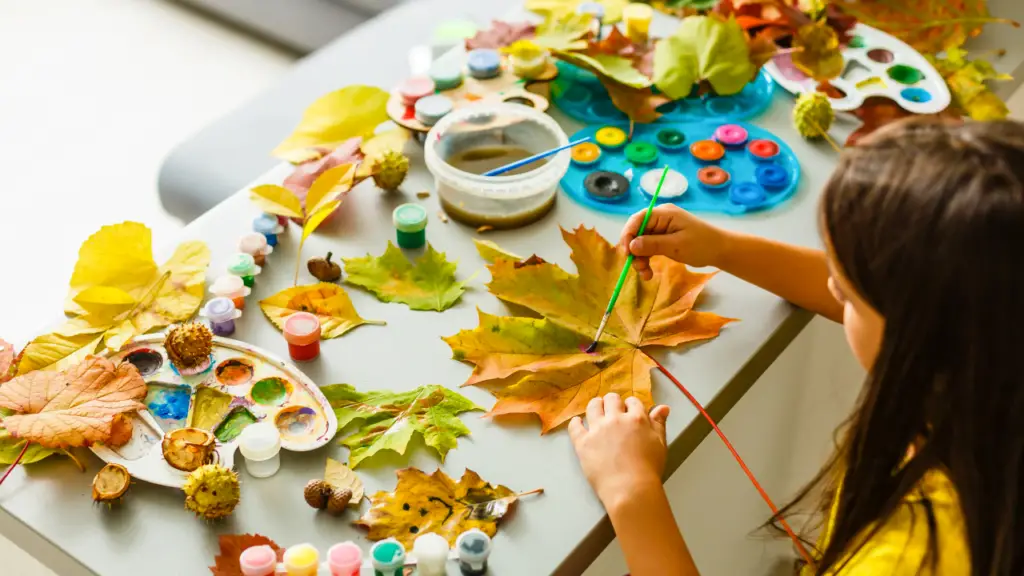
The Allure of Collaborative Garden Art
Collaborative Garden Art is where gardening meets artistry. Instead of painting on a blank canvas, siblings use the garden as their playground, introducing art pieces they’ve crafted together, thus merging their individual styles, preferences, and visions.
Acrylic Paint Set with 12 Art Brushes, 36 Colors

Getting Started with Collaborative Garden Art
- Brainstorming Ideas: Start with a session where siblings can discuss themes, inspirations, and the kind of art they envision for their garden. Sketching out rough ideas can be helpful at this stage.
- Choose the Medium: Garden art isn’t restricted to one form. From painted rocks and mosaic stepping stones to handcrafted wind chimes and decorative birdhouses, the options are vast and varied.
- Gather Materials: Once they’ve zeroed in on the kind of art they want to create, the next step is to source materials. Many projects can be done using upcycled or recycled items, which is not only budget-friendly but also eco-conscious.
- Crafting Together: This is where the fun truly begins. Siblings can divide tasks based on each one’s strengths. While one might be great at sketching out designs, the other could excel at the actual crafting or painting.
- Placement in the Garden: The art pieces should be strategically placed to ensure they complement the garden’s natural beauty and don’t overshadow the plants. This can lead to discussions about design, balance, and visual appeal.
Benefits of Collaborative Garden Art
- Shared Sense of Achievement: Completing an art project together brings a feeling of accomplishment. Every time they step into the garden, they’re greeted by art that’s a testament to their shared efforts.
- Learning from Each Other: Collaborative projects often lead to skill sharing. One sibling might teach the other a particular art technique, or they might discover new methods together.
- Strengthened Bond: Shared projects demand communication, understanding, and compromise. Working on garden art together can enhance these qualities in siblings, thus strengthening their bond.
- A Unique Garden: The garden becomes a reflection of their combined personalities. It stands out, not just because of the plants but also because of the unique art pieces that adorn it.
Expanding the Artistic Horizons
As the siblings become more comfortable with their collaborative art endeavors, they can explore advanced projects:
- Sculpting: Creating garden sculptures using materials like clay, wire, or even upcycled items.
- Water Features: Designing a hand-painted birdbath or a small decorative pond with mosaic tiles.
- Interactive Art: Crafting pieces that invite interaction, like a musical fence or a garden labyrinth.
gardening ideas for sibling
Collaborative Garden Art transcends the boundaries of traditional gardening and artistry. For siblings, it provides a platform to express, connect, and create. The garden becomes a gallery, showcasing their bond, creativity, and shared memories. In the end, it’s not just about the art they produce but the memories crafted, the challenges overcome, and the joy of witnessing their shared vision come to life amidst greenery and blooms.
7. Plant Swap
gardening ideas for sibling
In the vibrant community of garden enthusiasts, there’s a tradition that’s been gaining momentum over the years – the Plant Swap. This simple yet delightful event is a testament to the joys of sharing, networking, and discovering new plant varieties. Whether conducted amongst a close-knit group of friends, siblings, or a larger community, a plant swap can rejuvenate a garden and the gardener’s spirit.

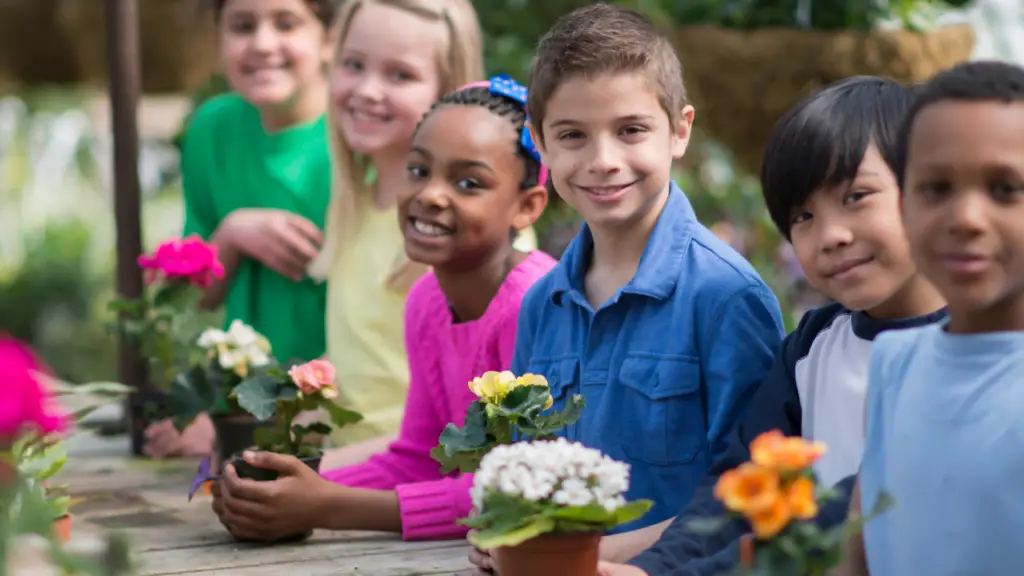
Unraveling the Concept of a Plant Swap
At its core, a plant swap is akin to a potluck, but for plants. Participants bring plants, seeds, or cuttings from their garden to exchange with others. The aim? To diversify one’s garden, share surplus plants, and foster a sense of community among plant lovers.
Organizing a Successful Plant Swap
- Decide on the Venue: A plant swap can be as intimate as a backyard gathering among siblings or friends, or it can be a larger event at a community center or local park.
- Set the Rules: Clearly communicate what participants should bring. This could range from potted plants and seeds to cuttings or bulbs. It’s also good to mention the kind of plants that are acceptable, especially if invasive species are a concern.
- Labeling is Key: Ensure every plant brought to the swap has a label. This should ideally mention the plant’s name, its light and water requirements, and any other care tips.
- Facilitate the Swap: Depending on the number of participants, you can have a free-form swap where participants directly exchange plants or a more structured approach, like a numbering or token system.
- Include a Knowledge Sharing Session: Apart from swapping plants, it’s a great idea to have a few seasoned gardeners share tips, tricks, and gardening wisdom with the group.
Benefits of a Plant Swap
- Diversify the Garden: This is an excellent opportunity for gardeners to introduce new plant varieties to their gardens without the expense of buying them.
- Sharing Surplus: Often, gardeners have plants that proliferate, leading to a surplus. A plant swap is a perfect solution to ensure these plants find a new home.
- Building Community: Beyond plants, it’s about people. Swaps allow for networking, sharing experiences, and building a sense of camaraderie among participants.
- Learning Opportunity: For novice gardeners, this can be a treasure trove of information. They get hands-on advice and insights from more experienced participants.
Siblings and Plant Swap
For siblings who share a love for gardening, participating in or organizing a plant swap can be a bonding exercise. It’s an activity where they can pool their resources, collaborate on choices, and together discover new plant varieties. The shared experiences of nurturing the new plants they acquire can lead to countless cherished memories.
Taking it Digital
With the digital age in full swing, virtual plant swaps have also emerged. Gardeners can list the plants they have and the ones they want. Once matched, they can mail the plants or seeds to each other, ensuring gardening enthusiasts from different locations can also partake in the joy of swapping.
Kids Organic Garden Kit – Kids Vegetable

gardening ideas for sibling
A Plant Swap isn’t just about exchanging flora. It’s about community, collaboration, and the sheer joy of discovering new green gems. It reiterates the fundamental ethos of gardening: growth, sharing, and continuous learning. Whether between siblings, friends, or a broader group of enthusiasts, plant swaps are celebrations of the green threads that bind us all.
8. Weekly Garden Date
gardening ideas for sibling
While gardens are primarily known for the peaceful solitude they offer, there’s another dimension that’s equally rewarding: the shared experiences gardens can facilitate. A Weekly Garden Date is a concept that revolves around this idea, turning a personal green space into a communal bonding zone. Especially for siblings, this recurring event can be a delightful mix of productive gardening and heartwarming memories.
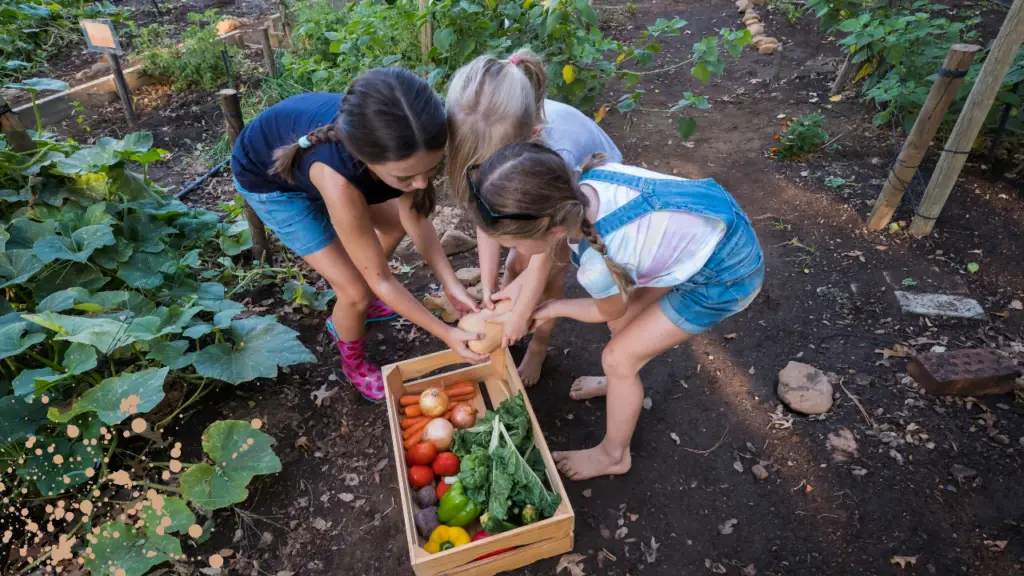
Diving into the Weekly Garden Date
The premise is simple: siblings set aside a designated time each week, a ‘date,’ to come together in the garden. No distractions, no other commitments. Just the garden, the two of them, and their shared passion for nature.
Why Commit to a Weekly Garden Date?
- Regular Maintenance: Gardens require constant attention. Setting a weekly date ensures that the garden remains in top shape, as plants get consistent care.
- Shared Responsibility: Gardening tasks are divided among siblings, fostering teamwork and reducing the workload for each individual.
- Learning Together: One sibling might be better at pruning while the other excels in identifying pests. By working together, they can share their knowledge and skills.
- Strengthening Bonds: In the fast-paced world we live in, setting aside dedicated time for shared activities can immensely strengthen relationships. A garden date can be therapeutic, offering emotional connections amidst nature.
- Review and Plan: The weekly interval allows siblings to review the garden’s progress and make plans for the upcoming week, whether it’s introducing new plants or changing the garden layout.
Ideas to Spice Up the Garden Date
- Themed Dates: Each week can have a theme. For instance, one week could be about herbs, and the siblings can focus on planting, pruning, and learning about various herbs.
- Garden Picnics: After some hard work, siblings can enjoy a lovely picnic amidst the fruits of their labor, relishing homemade dishes and drinks.
- DIY Project Week: Dedicate some dates to DIY projects, like creating birdhouses, painting pots, or building a new garden bench.
- Garden Challenges: Introduce playful challenges like who can weed out the most in 10 minutes or who can create the most aesthetic flower arrangement.
- Invite a Guest: Every once in a while, invite a gardening expert or enthusiast to join the date, introducing fresh perspectives and insights.
The Emotional Harvest
Over time, the Weekly Garden Date becomes more than a gardening ritual. It evolves into a repository of shared memories, laughter, challenges, and accomplishments. The garden bears witness to not just the growth of plants, but also the flourishing relationship between the siblings.
Adapting the Concept
While the idea is centered around siblings, it’s versatile. It can be adopted by couples, friends, or even neighbors. The essence remains the same: regular, shared moments in the embrace of nature.
gardening ideas for sibling
The Weekly Garden Date is a testament to how gardens can be platforms for human connection. They’re not just spaces where plants grow; they’re where relationships blossom, memories are sown, and hearts are nurtured. In the end, the blooms and the bounty are just a bonus compared to the enriched bond that develops week after week.
9. Mystery Seed Challenge
gardening ideas for sibling
Gardening, with its predictable routines and expected outcomes, often emanates a calming aura. But what if we infuse an element of surprise, thrill, and anticipation into it? Enter the Mystery Seed Challenge – a delightful twist to traditional gardening, bound to ignite curiosity, fun, and a touch of friendly competition, especially among siblings.
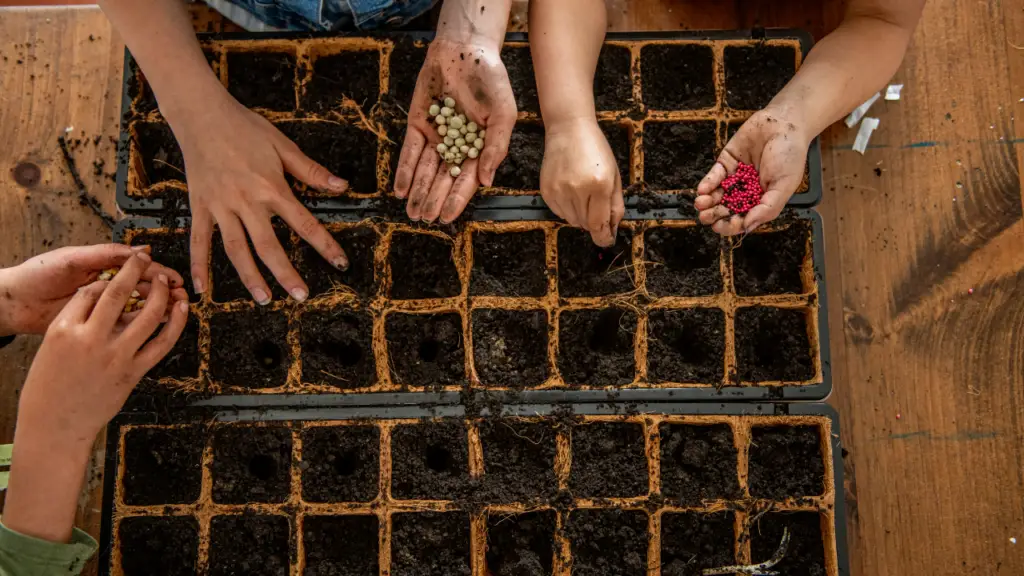
Delving into the Mystery Seed Challenge
At its core, the Mystery Seed Challenge is a gardening endeavor where participants plant unidentified seeds and watch them grow, attempting to discern the plant type as it progresses. The intrigue lies in the unknown: What plant is it? How should it be cared for? Will the siblings’ predictions be right?

How to Organize a Mystery Seed Challenge
- Acquisition of Mystery Seeds: Purchase seeds without revealing their identity to the participants, or better yet, have a neutral party select them for added suspense.
- Setting the Ground Rules: Determine the duration of the challenge, the number of guesses allowed, and decide whether any hints will be provided along the way.
- Planting the Seeds: Siblings can plant the seeds in pots or dedicated garden plots. Ensure each participant has the same set of mystery seeds to ensure fairness.
- Documenting the Journey: As the plants grow, siblings can maintain a journal or photo log, noting observations, growth patterns, and making periodic guesses.
- Revealing the Mystery: At the end of the challenge or when a participant correctly identifies the plant, reveal the mystery seeds’ true identity.
- Celebrating the Outcome: Whether it’s relishing the fruits of a mystery vegetable plant or enjoying the bloom of a surprise flower, the culmination is always a cause for celebration.
Why Take Up the Mystery Seed Challenge?
- Educational Value: It’s an opportunity for siblings to enhance their plant identification skills, as they rely on observations and research to pinpoint the mystery plant.
- Friendly Competition: A bit of healthy rivalry can add zest to the gardening experience. Who will be the first to guess correctly? The stakes are high!
- Adaptable to Skill Levels: Whether gardening novices or seasoned pros, the challenge can be adapted to fit all expertise levels by selecting seeds accordingly.
- Bonding Over Shared Anticipation: The mutual excitement, speculations, and shared journey of nurturing an unknown plant can bring siblings closer together.
Enhancing the Challenge
- Theme-based Mysteries: Choose seeds based on specific themes, such as exotic plants, heirloom vegetables, or endangered species.
- Collaborative Research: Set aside dedicated times when siblings can together delve into books or online resources, hunting for clues to the mystery plant’s identity.
- Invite More Participants: Expand the challenge to include friends or neighbors, turning it into a larger event with multiple mystery seeds and added layers of intrigue.
gardening ideas for sibling
The Mystery Seed Challenge isn’t just about identifying a plant. It’s about embracing uncertainty, celebrating the small discoveries along the way, and indulging in the sheer joy of gardening with an added layer of suspense. For siblings, it can become a cherished memory, a testament to their combined efforts, curiosity, and the myriad emotions that sprung from a tiny, enigmatic seed.
10. DIY Garden Fort
gardening ideas for sibling
Among the countless memories of childhood, few resonate as deeply as building forts. Whether made of cushions, blankets, or boxes indoors, they offered a world of imagination. However, stepping outdoors and crafting a DIY Garden Fort elevates this concept to a whole new level. For siblings, this becomes more than just a fun project; it’s about teamwork, shared spaces, and a refuge amidst the green.
👉 >>>>Little Wombats Kids Gardening Tools, 10 Piece Garden / Backyard Tools, Gloves, Apron, Rake, Hat, Shovel, Watering Can, Spray Bottle, Butterfly Net & Tote – Pretend Play for Boys & Girls Age 3-7
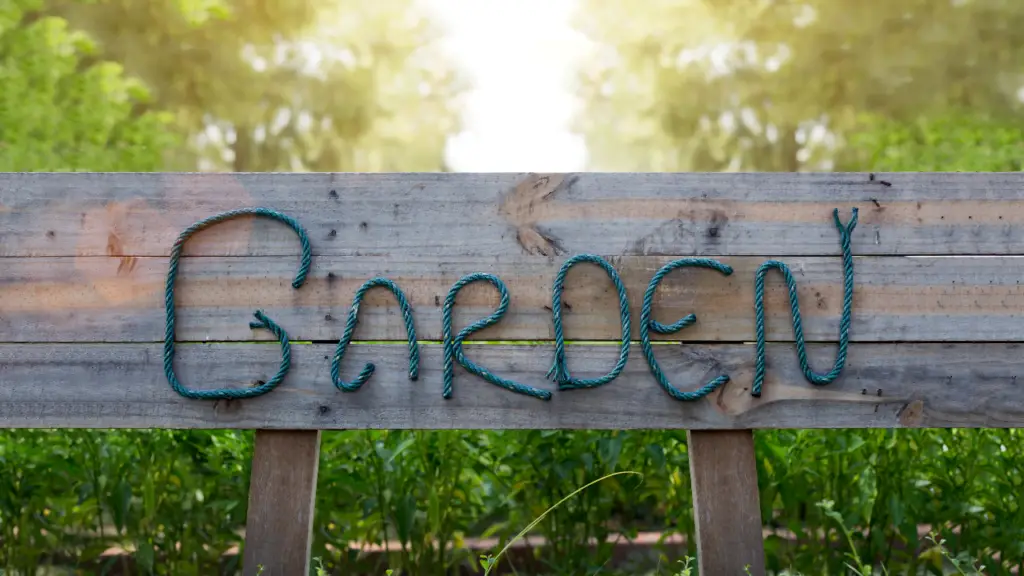
Setting the Stage for the DIY Garden Fort
Creating a garden fort is a blend of artistry, practicality, and a hearty dose of sibling collaboration. It’s a venture where dreams take physical shape, amidst chirping birds, rustling leaves, and fragrant blossoms.
The Blueprint for Success
- Choosing the Spot: Begin by identifying a suitable spot in the garden. It could be nestled between tall trees, alongside a garden patch, or even in a quiet corner. Ensure it’s safe, relatively flat, and spacious enough for your envisioned fort.
- Gathering Materials: Depending on the design, gather materials like bamboo poles, ropes, old sheets, wooden pallets, or even large cardboard boxes. Remember, it doesn’t need to be fancy; it just needs to be sturdy and safe.
- Laying the Foundation: For a more robust structure, start with a wooden pallet base or flat stones. This provides a solid ground, especially if you plan on adding some garden furniture inside.
- Building the Structure: Erect bamboo poles or branches as the main supports. Secure them firmly with ropes or twine. For walls, use draped sheets, tarpaulin, or even intertwined branches for a rustic feel.
- Accessorizing the Space: Introduce comfy cushions, fairy lights, or even a little hammock inside. Add a signboard with a quirky name for the fort, maybe blending both siblings’ names for a personal touch.
Making the Garden Fort Special
- Nature Integration: Plant fast-growing climbers like morning glory or beans around the fort. In time, they’ll weave a natural green wall.
- DIY Decor: Engage in art sessions where siblings paint stones, create hanging mobiles, or even design their own garden flags.
- Memory Corner: Dedicate a corner of the fort for cherished memories. Hang pictures, mementos, or even jot down memorable garden experiences.
- Wildlife-Friendly: Add bird feeders, butterfly puddlers, or even a mini pond close by. This ensures a steady flow of garden visitors, bringing life to the fort.
Benefits of the DIY Garden Fort
- Learning Skills: From basic construction techniques to understanding plant behavior, the project is an educational treasure trove.
- Strengthening Bonds: Facing challenges, making joint decisions, and sharing the joy of accomplishment tightens the bond between siblings.
- Therapeutic Space: Amidst the hustle of life, the fort becomes a tranquil retreat – a place for reading, relaxation, or simply soaking in nature.
- Fostering Creativity: With no strict blueprints, siblings can let their imagination run wild. The fort can evolve, reflecting their growing creativity.
A DIY Garden Fort isn’t just a structure made of sticks and sheets; it’s a canvas where memories are painted, where laughter resonates, and where dreams find a home. For siblings, it’s a joint venture into the realms of creativity and nature, resulting in a shared sanctuary that will be cherished for years to come.
Wrapping It Up – gardening ideas for sibling
Gardening isn’t just about plants; it’s about the memories and bonds we create while tending to them. When siblings come together, the garden becomes a playground of shared experiences, teamwork, and fun surprises.
Remember, it’s not just the flowers or forts you create; it’s the laughter, teamwork, and stories that will stick with you for a lifetime.
So, if you’ve got a sibling and even a small space to plant something, why not start a gardening project together? As you nurture the plants, you’ll also strengthen your bond. Dive into gardening, cherish the time spent together, and watch both the garden and your relationship bloom. Let’s get planting!
👉 SIBLING BONDING GAMES AND ACTIVITIES








Pingback: CHILDREN AND PETS - SPECIAL BOND - SiblingVibes